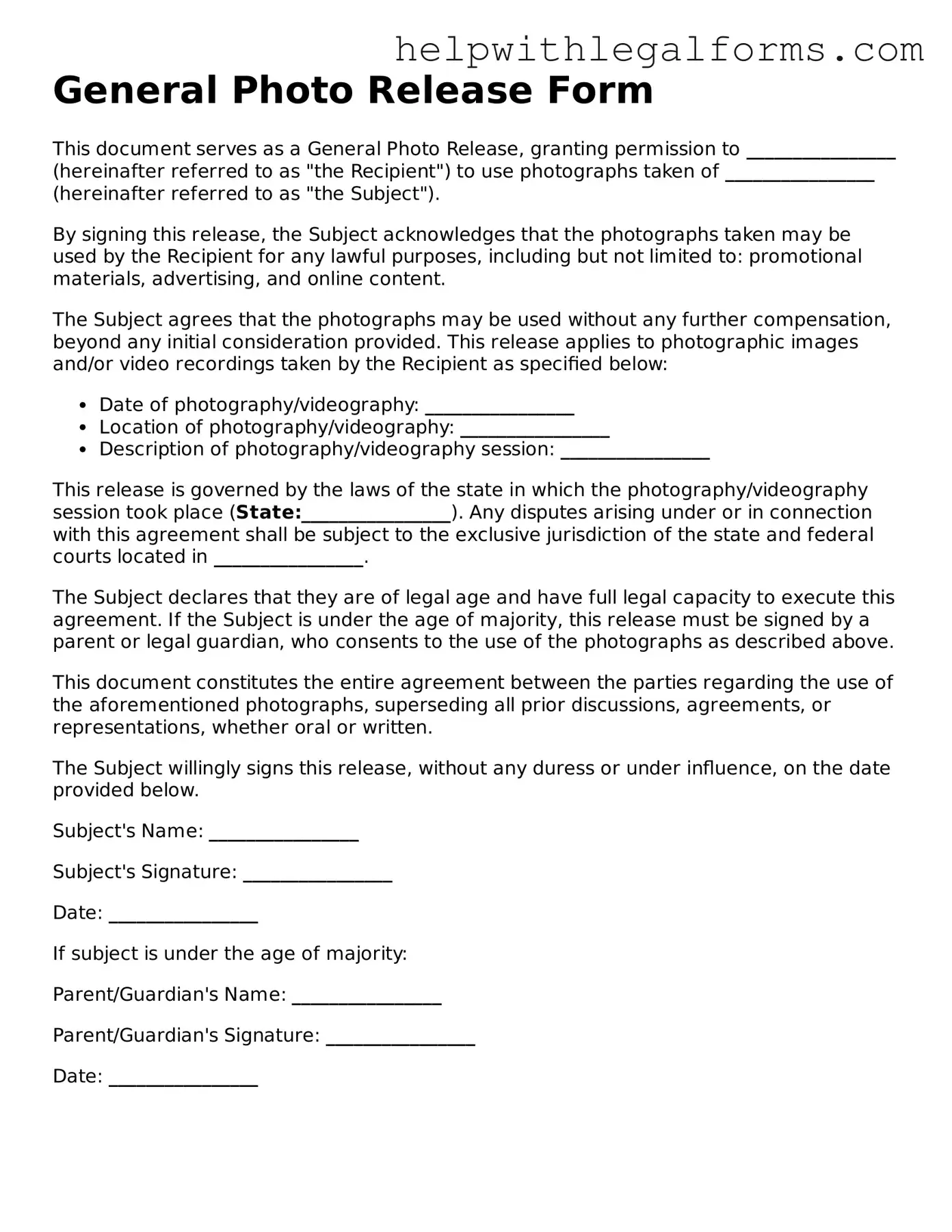General Photo Release Form
This document serves as a General Photo Release, granting permission to ________________ (hereinafter referred to as "the Recipient") to use photographs taken of ________________ (hereinafter referred to as "the Subject").
By signing this release, the Subject acknowledges that the photographs taken may be used by the Recipient for any lawful purposes, including but not limited to: promotional materials, advertising, and online content.
The Subject agrees that the photographs may be used without any further compensation, beyond any initial consideration provided. This release applies to photographic images and/or video recordings taken by the Recipient as specified below:
- Date of photography/videography: ________________
- Location of photography/videography: ________________
- Description of photography/videography session: ________________
This release is governed by the laws of the state in which the photography/videography session took place (State:________________). Any disputes arising under or in connection with this agreement shall be subject to the exclusive jurisdiction of the state and federal courts located in ________________.
The Subject declares that they are of legal age and have full legal capacity to execute this agreement. If the Subject is under the age of majority, this release must be signed by a parent or legal guardian, who consents to the use of the photographs as described above.
This document constitutes the entire agreement between the parties regarding the use of the aforementioned photographs, superseding all prior discussions, agreements, or representations, whether oral or written.
The Subject willingly signs this release, without any duress or under influence, on the date provided below.
Subject's Name: ________________
Subject's Signature: ________________
Date: ________________
If subject is under the age of majority:
Parent/Guardian's Name: ________________
Parent/Guardian's Signature: ________________
Date: ________________
